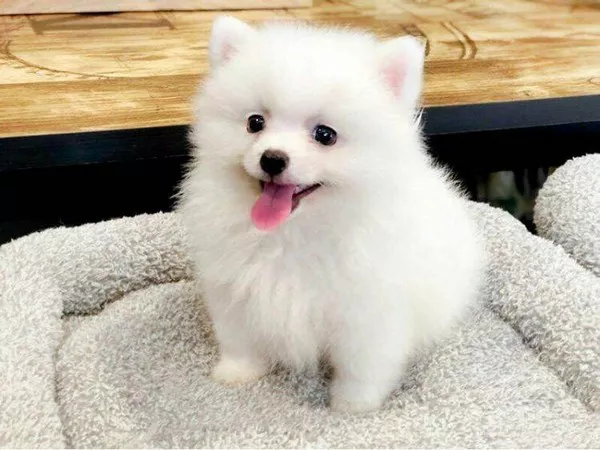Brushing your Pomeranian is an essential part of its grooming routine. This fluffy breed, known for its stunning double coat, requires regular brushing to maintain its appearance and health. Proper brushing helps prevent matting, reduces shedding, and keeps your Pomeranian’s coat looking its best. This guide provides a detailed approach to brushing your Pomeranian, covering tools, techniques, and tips to ensure a smooth grooming experience.
Understanding the Pomeranian Coat
Before diving into brushing techniques, it is important to understand the characteristics of the Pomeranian coat:
1. Double Coat
Undercoat: The Pomeranian has a dense, soft undercoat that provides insulation.
Outer Coat: The topcoat is long, harsh, and stands out from the body, giving the breed its characteristic fluffy appearance.
2. Coat Care Needs
Shedding: Pomeranians shed year-round, with heavier shedding during seasonal changes.
Matting: The dense coat can become matted if not brushed regularly. Mats can cause discomfort and skin issues if left untreated.
Understanding these aspects will help you in choosing the right tools and techniques for effective brushing.
Essential Brushing Tools
To brush your Pomeranian effectively, you will need the following tools:
1. Slicker Brush
Description: A slicker brush has fine, short wires close together. It is designed to remove loose hair and detangle mats.
Usage: Use the slicker brush to work through the undercoat and outer coat, focusing on areas prone to tangling.
2. Undercoat Rake
Description: An undercoat rake has long, spaced-out teeth designed to penetrate the topcoat and reach the undercoat.
Usage: Use the rake to remove loose undercoat fur and reduce shedding.
3. Comb
Description: A metal comb with both wide and narrow teeth can help with final detangling and smoothening.
Usage: Use the comb to go over the coat after brushing to remove any remaining tangles.
4. De-matting Tool
Description: A de-matting tool is used for more severe mats that a brush may not handle.
Usage: Use the de-matting tool carefully to cut through and remove mats without damaging the coat.
Step-by-Step Brushing Technique
Follow these steps to brush your Pomeranian effectively:
1. Prepare Your Pomeranian
Calm Environment: Choose a quiet, comfortable place for brushing. This will help keep your Pomeranian calm.
Start with a Dry Coat: Brush your Pomeranian’s coat when it is dry. Wet fur can be more prone to breakage and tangling.
2. Brush the Outer Coat
Use the Slicker Brush: Start with the slicker brush to gently work through the topcoat. Brush in the direction of hair growth, using long, smooth strokes.
Pay Attention to Tangled Areas: Focus on areas that tend to mat, such as behind the ears, under the legs, and around the tail. Be gentle to avoid pulling on the fur.
3. Brush the Undercoat
Use the Undercoat Rake: After brushing the outer coat, use the undercoat rake to reach the dense undercoat. Start from the base of the coat and work your way outwards.
Remove Loose Fur: The rake will help remove loose undercoat fur and reduce shedding. Brush in small sections to ensure thorough grooming.
4. De-tangle and De-mat
Check for Mats: Use your fingers or a comb to check for any mats or tangles in the coat.
Use the De-matting Tool: For any stubborn mats, use a de-matting tool. Work carefully to cut through the mat without damaging the surrounding fur. Hold the fur near the skin to avoid pulling on it.
5. Finish with a Comb
Use the Metal Comb: Finish brushing by using the metal comb to go through the coat one last time. This helps to remove any remaining tangles and smooth out the coat.
Check for Areas: Ensure all areas of the coat are brushed, including the belly, legs, and neck.
Grooming Routine
To keep your Pomeranian’s coat in top condition, establish a regular grooming routine:
1. Brushing Frequency
Daily Brushing: Brush your Pomeranian’s coat daily to prevent mats and reduce shedding. Daily brushing also helps to keep the coat clean and free of debris.
Adjust Frequency: During shedding seasons, increase brushing frequency to manage the increased amount of loose fur.
2. Bathing
Bathing Schedule: Bathe your Pomeranian every 4 to 6 weeks or as needed. Over-bathing can strip the coat of natural oils and lead to dryness.
Use Dog-Specific Shampoo: Choose a mild, dog-specific shampoo to clean the coat without causing irritation.
3. Trimming
Regular Trims: Trim your Pomeranian’s coat regularly to maintain its shape and manage any split ends. Trim the fur around the paws, ears, and tail to keep it looking neat.
Professional Grooming: Consider professional grooming every few months for a thorough trim and additional care.
Common Issues and Solutions
Address common grooming issues with the following solutions:
1. Matting
Prevent Mats: Regular brushing is key to preventing mats. Pay extra attention to areas prone to tangling.
De-matting: Use a de-matting tool for severe mats. Be patient and work gently to avoid hurting your dog.
2. Shedding
Manage Shedding: Regular brushing helps manage shedding by removing loose fur before it falls out.
Undercoat Rake: Use the undercoat rake to remove excess undercoat fur and reduce shedding.
3. Skin Irritations
Check Skin Health: During brushing, check for any signs of skin irritation or parasites. Redness, itching, or bumps may indicate a problem.
Consult a Veterinarian: If you notice any skin issues, consult your veterinarian for advice and treatment.
See also: How to Groom My Labradoodle at Home
Conclusion
Brushing your Pomeranian is an essential part of maintaining its coat and overall health. By understanding the breed’s unique coat characteristics and using the right tools and techniques, you can keep your Pomeranian looking beautiful and feeling comfortable.
Establish a regular brushing routine, address any grooming issues promptly, and provide ongoing care to ensure your Pomeranian’s coat remains in excellent condition. With patience and consistency, you can enjoy a happy and healthy Pomeranian with a stunning, well-maintained coat.


